Structure of DNA
DNA has a double helix structure, which looks like a twisted ladder. The sides of the ladder are made up of alternating sugar (deoxyribose) and phosphate molecules, while the rungs are made up of pairs of nitrogenous bases. There are four types of nitrogenous bases in DNA: adenine (A), thymine (T), cytosine (C), and guanine (G). Adenine pairs with thymine, and cytosine pairs with guanine, forming the rungs of the ladder.Function of DNA
DNA contains the genetic instructions that are used in the development and functioning of all living organisms. These instructions are encoded in the sequence of the nitrogenous bases along the DNA molecule. The sequence of bases determines the genetic characteristics of an organism and is responsible for the inheritance of traits from parents to offspring.Study Guide
To understand DNA, it's important to grasp the following key concepts:- The structure of DNA, including the double helix and the components of the nucleotides (sugar, phosphate, and nitrogenous bases).
- The function of DNA as the carrier of genetic information and its role in inheritance and genetic expression.
- The complementary base pairing of adenine with thymine and cytosine with guanine, and how this pairing contributes to the stability and replication of DNA.
- The significance of DNA in the development, growth, and reproduction of living organisms.
- The impact of mutations and genetic variations on DNA and its implications for genetic diversity and evolution.
◂Science Worksheets and Study Guides Third Grade. Weather
Study Guide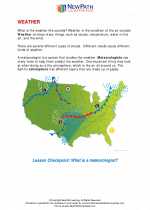 Weather
Weather  Worksheet/Answer key
Worksheet/Answer key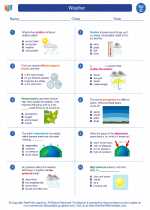 Weather
Weather  Worksheet/Answer key
Worksheet/Answer key Weather
Weather  Worksheet/Answer key
Worksheet/Answer key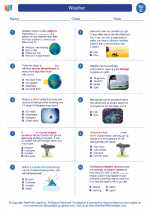 Weather
Weather  Vocabulary/Answer key
Vocabulary/Answer key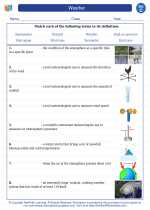 Weather
Weather  Vocabulary/Answer key
Vocabulary/Answer key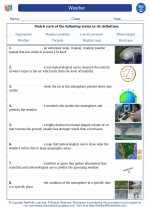 Weather
Weather 

 Worksheet/Answer key
Worksheet/Answer key
 Worksheet/Answer key
Worksheet/Answer key
 Worksheet/Answer key
Worksheet/Answer key
 Vocabulary/Answer key
Vocabulary/Answer key
 Vocabulary/Answer key
Vocabulary/Answer key

The resources above cover the following skills:
EARTH AND SPACE SCIENCE (NGSS)
Earth’s Systems
Students who demonstrate understanding can:
Represent data in tables and graphical displays to describe typical weather conditions expected during a particular season.